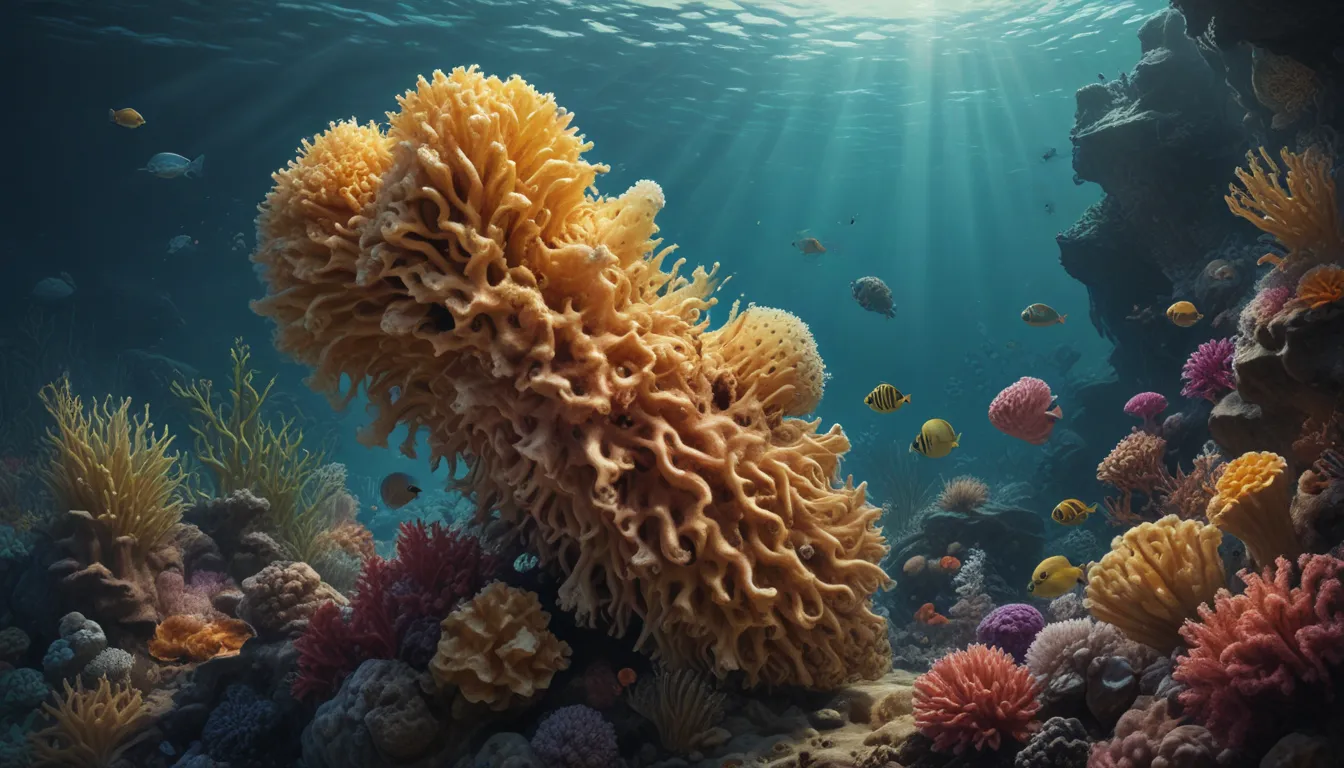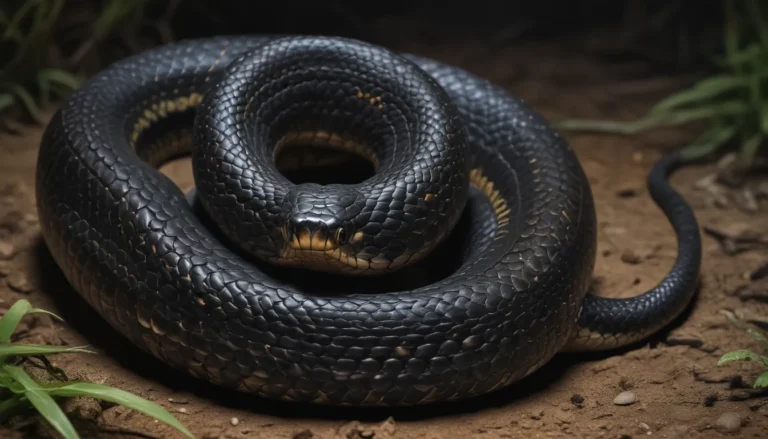The pictures we use in our articles might not show exactly what the words say. We choose these pictures to make you interested in reading more. The pictures work together with the words but don’t take their place. The words still tell you the important facts.
Welcome to the enchanting realm of sea sponges, fascinating organisms that have inhabited the world's oceans for over 500 million years. In this article, we will delve into 18 intriguing sea sponge facts, unveiling their diverse forms, unique characteristics, and ecological significance. Join us on a journey into the depths of knowledge as we unravel the wonders of these captivating underwater creatures.
Unveiling the Ancient Existence of Sea Sponges
Let's begin our exploration by delving into the rich evolutionary history of sea sponges. Dating back over 500 million years, these ancient beings are considered one of the oldest animal groups on Earth, predating dinosaurs and even flowering plants. Their enduring presence in marine ecosystems showcases the resilience and adaptability of these remarkable organisms.
From Plant-Like Appearance to Animal Classification
Despite their plant-like appearance, sea sponges are classified as animals belonging to the phylum Porifera. The name "Porifera" is derived from the Latin words "porus," meaning pore, and "ferre," meaning to bear, aptly describing their porous structure. This unique classification highlights the intriguing blend of characteristics that make sea sponges stand out in the underwater world.
Exploring the Diverse Forms of Sea Sponges
Sea sponges boast a wide array of shapes, sizes, and colors, ranging from encrusting varieties that cling to rocks or coral reefs to branching types that resemble underwater trees. Their remarkable diversity showcases the creative and adaptive evolution of these fascinating organisms, each form serving a unique ecological purpose in marine ecosystems.
Unveiling the Filter Feeding Abilities of Sea Sponges
One of the most fascinating aspects of sea sponges is their role as filter feeders. Specialized cells called choanocytes enable sea sponges to extract food particles from the water that flows through their bodies, trapping tiny organisms and organic matter for consumption. This efficient feeding mechanism plays a vital role in maintaining the delicate balance of marine ecosystems.
The Oxygenating Superpowers of Sea Sponges
In addition to filtering water, sea sponges serve as essential oxygen providers in marine environments. By absorbing oxygen from the water and releasing carbon dioxide, they contribute to the health and equilibrium of gases in underwater ecosystems. Their presence helps sustain the vibrant life forms that depend on well-oxygenated waters for survival.
Unraveling the Structural Marvels of Sea Sponges
Sea sponges possess a unique internal structure composed of a intricate network of channels and pores. This intricate system allows water to flow freely through their bodies, facilitating feeding, waste removal, and gas exchange. Their structural complexity highlights the sophisticated adaptation of sea sponges to their aquatic habitats.
Celebrating the Impressive Regenerative Abilities of Sea Sponges
One of the most remarkable traits of sea sponges is their exceptional regenerative capabilities. Even when damaged or fragmented, these resilient organisms can regrow and repair themselves, showcasing their unparalleled ability to thrive in challenging conditions. Their remarkable resilience underscores the importance of protecting these vital members of marine ecosystems.
Unveiling the Chemical Defenses of Sea Sponges
Certain sea sponges produce chemical compounds with potent defensive properties, aiding in their protection from predators. These compounds not only safeguard sea sponges from harm but also hold promise for the development of new pharmaceutical drugs. The remarkable chemical diversity of sea sponges continues to inspire scientific research and innovation.
Nurturing Symbiotic Relationships in the Underwater World
Sea sponges often form symbiotic relationships with a variety of microorganisms, including bacteria and algae. These microbial partners play a crucial role in the overall health and survival of sea sponges, contributing to their well-being and resilience in diverse marine environments. The harmonious coexistence of these organisms exemplifies the interconnectedness of life beneath the waves.
Embracing the Habitat Variety of Sea Sponges
Sea sponges exhibit a remarkable adaptability to a wide range of marine habitats, from shallow coastal waters to deep-sea environments. Thriving in both warm and cold waters, sea sponges showcase their ability to adapt to diverse conditions based on their specific species. Their widespread distribution highlights the importance of preserving the unique ecosystems that support these fascinating organisms.
Recognizing the Role of Sea Sponges in Coral Reef Ecosystems
Certain types of sea sponges, such as reef-building sponges, play a crucial role in the formation and maintenance of coral reefs. By providing structure, shelter, and food sources for various marine organisms, sea sponges contribute to the intricate balance of reef ecosystems. Their presence enriches the biodiversity and vitality of these vibrant underwater communities.
Beautifying the Underwater World as Natural Water Purifiers
Through their filter-feeding activities, sea sponges act as natural water purifiers, improving water quality by removing particles and toxins from their surrounding environment. Their contribution to the overall health and clarity of marine ecosystems highlights the invaluable service they provide in maintaining the pristine beauty of the underwater world.
Drawing Inspiration from Sea Sponges for Innovations
The intricate structures and efficient filtration systems of sea sponges have inspired scientists and engineers across various fields. Researchers are exploring ways to replicate the unique properties of sea sponges in applications such as water filtration systems and bioengineering. The innovative potential of sea sponges continues to fuel creative solutions for environmental challenges.
Embracing the Limited Mobility of Sea Sponges
While some sea sponges may exhibit slight mobility through contraction or expansion, they generally have limited movement once they settle in a suitable location. Stationary for the majority of their lives, sea sponges exemplify the quiet resilience and stability of life in the underwater world.
Celebrating the Notable Size Range of Sea Sponges
Sea sponges showcase a wide range of sizes, from barely visible species to impressive giants. The largest known sea sponge, discovered in the late 19th century, measured over 11 feet (3.3 meters) in diameter, highlighting the awe-inspiring diversity of these enchanting creatures. Their remarkable size range adds to the allure and fascination of sea sponges in the underwater world.
Embracing the Global Distribution of Sea Sponges
Sea sponges can be found in oceans worldwide, thriving in polar regions, tropical seas, and everything in between. Their global distribution contributes to the biodiversity and ecological balance of marine ecosystems on a grand scale, showcasing the resilience and adaptability of these ubiquitous organisms. Their presence enriches the diverse underwater landscapes that span the globe.
Unveiling the Unique Reproduction Strategies of Sea Sponges
Sea sponges exhibit diverse reproductive strategies, with some species reproducing asexually through budding or fragmentation, while others release sperm and eggs into the water for external fertilization. The larval stage of sea sponges eventually settles and develops into new sponge colonies, showcasing the intricate life cycle and reproductive diversity of these fascinating organisms.
Embracing Conservation Concerns for Sea Sponges
Despite their ecological importance, sea sponges face various threats, including pollution, habitat destruction, and overfishing. Protecting their habitats and raising awareness about their significance is crucial for the conservation of these remarkable organisms. Preserving the delicate balance of marine ecosystems is essential for safeguarding the future of sea sponges and the diverse underwater world they inhabit.
Conclusion: Embracing the Wonders of Sea Sponges
In conclusion, sea sponges are captivating organisms with a rich evolutionary history and diverse characteristics that contribute to the health and vitality of marine ecosystems. As filter feeders, oxygen providers, and habitat builders, sea sponges play essential roles in maintaining the delicate balance of underwater environments. By understanding and appreciating these fascinating creatures, we can work together to protect and conserve the wonders of the sea for generations to come.
Frequently Asked Questions (FAQs) About Sea Sponges
Can sea sponges be kept as pets in home aquariums?
Sea sponges require specific environmental conditions and are challenging to maintain in home aquariums. Their complex filtration needs and potential for overgrowth may disrupt the balance of the tank ecosystem.
Can sea sponges be used for bathing or cleaning purposes?
Natural sea sponges have been traditionally used for bathing and cleaning due to their absorbent and gentle properties. However, sustainable harvesting practices are essential to minimize environmental impact.
Are all sea sponges colorful?
Sea sponges come in a variety of colors, including vibrant hues like orange, pink, and purple. While some species exhibit vivid colors, others may display more subdued tones or camouflage patterns.
Can sea sponges survive in freshwater?
Most sea sponges are adapted to marine environments and cannot thrive in freshwater. However, select species have been found in brackish waters where freshwater and saltwater mix, showcasing their diverse adaptations.
Can sea sponges be consumed as food?
While certain cultures have culinary traditions involving specific species of sea sponges, many sea sponges contain toxic compounds and should not be consumed. It is essential to exercise caution when considering the consumption of sea sponges for culinary purposes.
With each question answered, we hope to enrich your understanding of sea sponges and their fascinating world beneath the waves.
In every fact we share, our dedication to delivering engaging, trustworthy content shines through. Each insight contributes to a shared pool of knowledge, offering diverse perspectives and credible information. As you explore and learn with us, rest assured that our commitment to quality and authenticity remains at the forefront of our mission. Trust in our pursuit of excellence as we continue to uncover the mysteries and wonders of the natural world.






